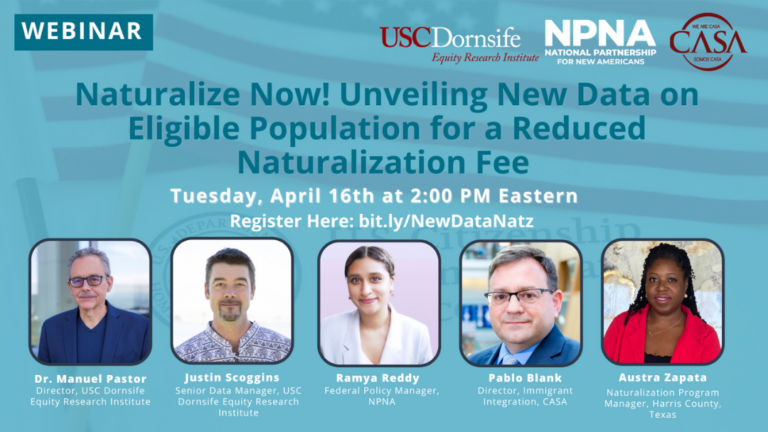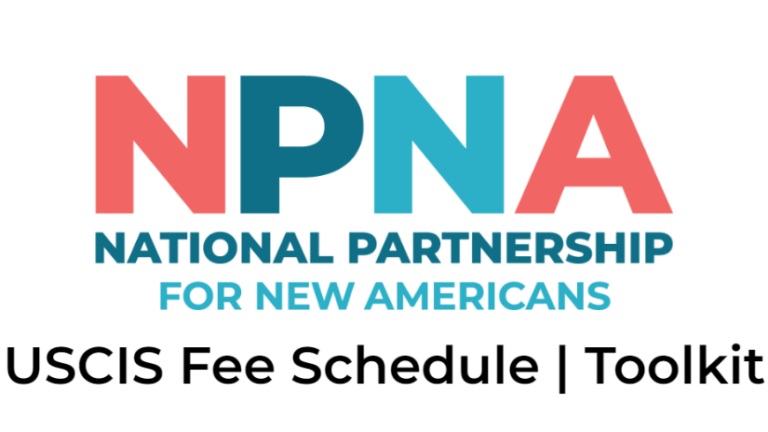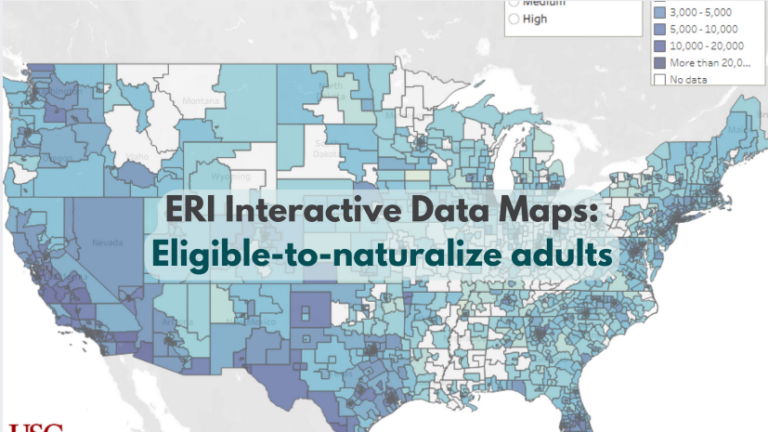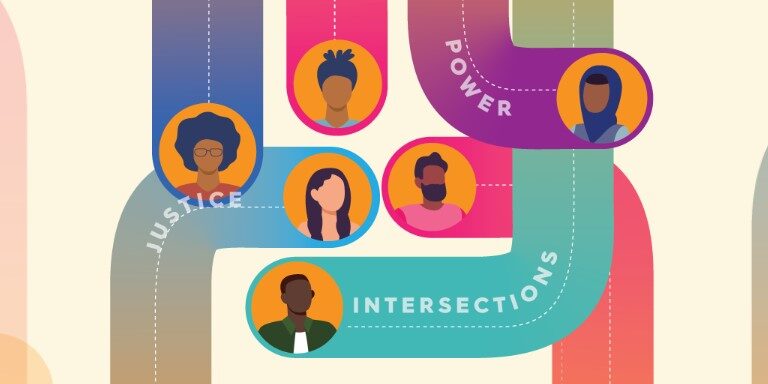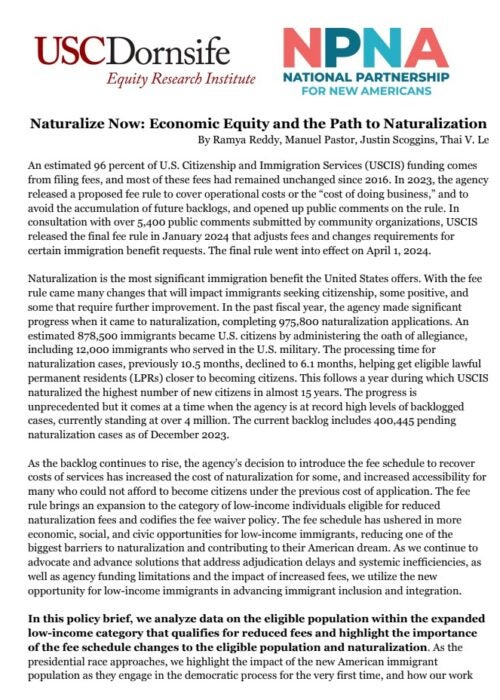
April 2024
By Ramya Reddy (NPNA), Manuel Pastor (ERI), Justin Scoggins (ERI), and Thai V. Le (ERI)
The National Partnership for New Americans (NPNA) and USC Dornsife Equity Research Institute (ERI) released a new policy brief, “Naturalize Now: Economic Equity and the Path to Naturalization,” analyzing and discussing the impact of the new U.S. Citizenship and Immigration Services (USCIS) naturalization fee structure. The final USCIS fee rule, which adjusts application fees and changes requirements for certain immigration benefit requests, went into effect on April 1, 2024 and expands access to naturalization to many who could not afford to become citizens under the previous application costs.
The expansion of access to the reduced fee and the codification of the fee waiver for naturalization was a significant win for immigrant advocates and lower-income immigrants, following a public comment period on the rule during which over 5,400 comments were submitted by community organizations, including many NPNA member organizations. While the new fee rule establishes an increase in the naturalization filing fee for some, the policy brief highlights who qualifies for the waived or reduced fee ($380) for naturalization.
Key findings:
- Of the 8.6 million eligible-to-naturalize population across the United States, more than two in three (71%) now qualify for a reduced fee ($380) or full fee waiver ($0).
- Compared to the previous fee rule, there are approximately 1.8 million more eligible-to-naturalize people who qualify for a reduced naturalization fee.
- California is home to the largest number of eligible-to-naturalize immigrants – about 350,700 people – who newly qualify for the reduced fee, followed by Texas (281,200), Florida (215,800), New York (126,100), and Illinois (78,500).
- More than 650,000 additional eligible-to-naturalize immigrants from Mexico now qualify for the reduced fee, followed by about 135,400 immigrants from Central America, 127,200 from South America, 121,600 from the West Indies, and 92,000 from Cuba.
- Latinos make up the majority (57%) of the newly qualified eligible-to-naturalize immigrants. Asian Americans are the second largest group at 17%, followed by White (15%) and Black (8%).
For more information and insights, check out these links below:
Naturalize Now! Unveiling New Data on Eligible Population for a Reduced Naturalization Fee Webinar
On April 16th, The National Partnership for New Americans (NPNA), ERI, and CASA co-hosted a webinar to explore the expanded naturalization eligibility that kicked off on April 1st, 2024. ERI’s own Manuel Pastor and Justin Scoggins joined this crucial discussion alongside community partners from across the country.
USCIS Fee Schedule Toolkit
On January 31, 2024, U.S. Citizenship and Immigration Services (USCIS) released a Federal Register Notice (FRN) announcing the revised fee schedule and changes to requirements for certain immigration benefit requests. This toolkit contains information about the USCIS fee rule changes, and will be updated weekly.
Interactive Map: Eligible to Naturalize Adults by Probability of Naturalization – by PUMA (2023)
This interactive map presents ERI’s most recent estimates of eligible-to-naturalize adults in the United States using the 2021 5-year American Community Survey (ACS) microdata from IPUMS-USA. In this analysis, we disaggregate the eligible-to-naturalize adult population by probability of naturalizing in the next two-to-three years: low probability, medium probability, and high probability.
